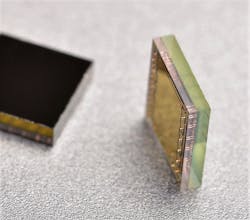MEMS technology is transforming high-density switch matrices
Electromechanical relays (EMR) and reed relays have served automated test equipment (ATE) applications well, but they’re not likely to satisfy their needs in the future, as ATE manufacturers strive to increase channel densities in a smaller system footprint and as more tests need to be performed, faster, on devices under test. The answer lies in MEMS switch technology that, after years of development, has transitioned to commercialization thanks to advances in materials, fabrication, and packaging.
There are many reasons why MEMS technology is so appealing for switching applications. Consider for a moment that hundreds of MEMS switch contacts can be fit in a space smaller than a single EMR or reed relay, and a MEMS switch matrix housed in a small surface-mount package can replace multiple EMRs. This alone would represent a dramatic breakthrough for high-density switching applications, but as this article will demonstrate, size alone is only one major benefit of this technology.
